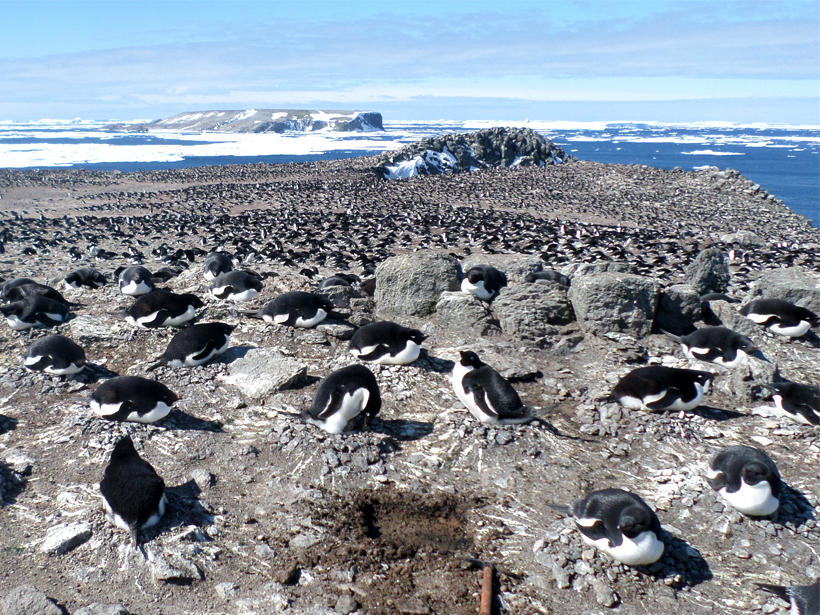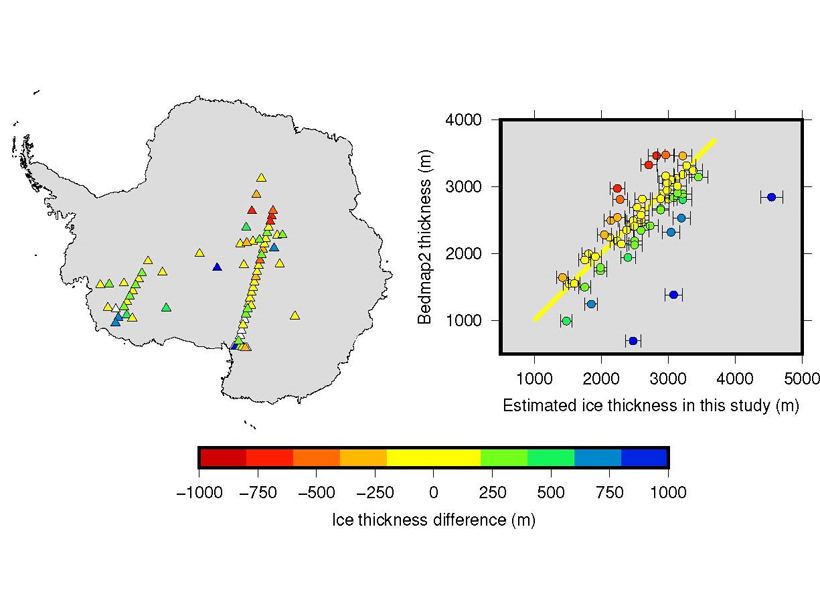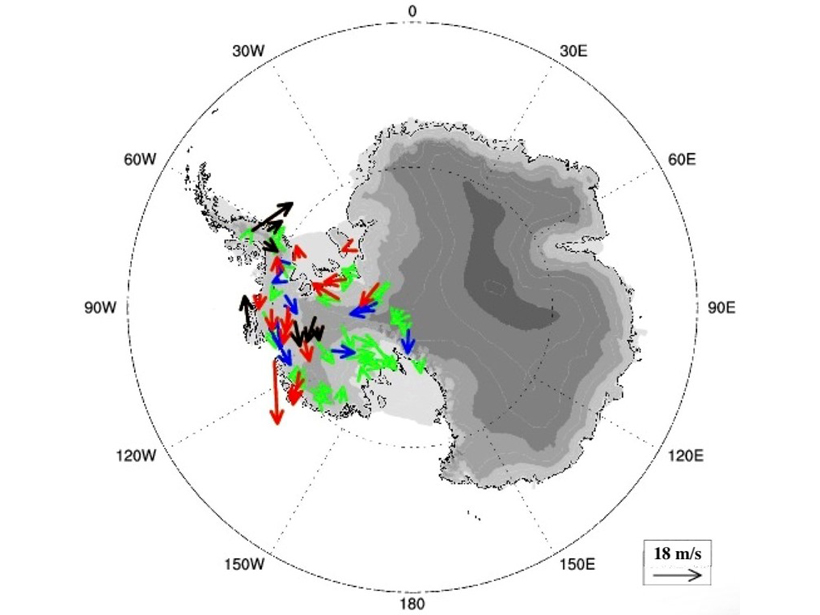A robot that can inch up icy surfaces may help scientists reach new heights in some of Earth’s most dangerous and remote landscapes.
Antarctica
Penguin Poop Keeps a Record of Antarctic Glaciation
Scientists are digging up Adélie penguin guano to study millennia of Antarctica’s history.
New Method to Measure Ice Cap Thickness
Naturally generated seismic waves bouncing up and down through an ice sheet can be used to determine the thickness of the ice and monitor future changes in ice thickness.
Dropsondes Reveal Atmospheric Boundary Layers Over Antarctic
636 high-resolution dropsondes reveal four types of atmospheric boundary layer over the Antarctic, including well-mixed and convective types.
A More Detailed Look at Earth’s Most Poorly Understood Crust
The second-generation Antarctic Digital Magnetic Anomaly Project offers a powerful new tool for probing the structure and evolution of the southernmost continent’s lithosphere.
Energetic Electrons Can Penetrate the Stratosphere
Precipitations of electrons with energies greater than 30 kiloelectron volts from the slot region penetrate at low altitude and can contribute to destroy ozone.
Exploring the Unknown of the Ross Sea in Sea Ice–Free Conditions
A team of polar scientists aboard the OGS Explora, cruising in rare ice-free conditions, discovered new evidence of ancient and modern-day ice sheet sensitivity to climatic fluctuations.
Ursula B. Marvin (1921–2018)
This bold mineralogist and feminist bucked norms that deemed geology unsuited for women. She contributed to meteoritics, science history, and petrology, including the analysis of Apollo Moon rocks.
Emperor Penguins’ Huddles Change in Response to Weather
How quickly the penguins huddled when weather worsened provided clues about their feeding success and how climate change may alter the Antarctic biosphere, according to scientists.
U.S. Scientists Safely Retrieved from Ice-Bound Antarctic Island
Argentineans came to the aid of stranded scientists.









